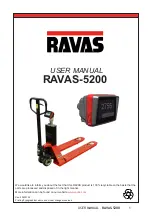
WHEELS A N D TIRES 10-3
this condition will affect steering, riding comfort,
and safe driving. F O L L O W T H E TIRE PRESSURE
R E C O M M E N D A T IO N S O F T H E TIRE M A N U F A C
T U R E R .
For greater riding comfort, prolonged tire
life, and to reduce wear and tear on the truck
chassis, tires should be inflated for loads carried
on tires as indicated in "Tire Load and Inflation
Table” in "Specifications” at end of this section.
In no case should this combined front and rear tire
load exceed the maximum recommended load shown
in "Load Capacity Chart” in the current Owner's
and Driver's Manual.
BALANCED INFLATION
The whole efficiency of the vehicle will be up
set if air pressure in the tires are out of balance.
Balanced inflation may be expressed as: All tires
on the same axle should always carry the same air
pressure. A difference in air pressure of the rear
tires and the front tires may be permissible with
in certain limitations; however, there should not
be a difference in pressure between the right and
left tires on the same axle. A five-pound under
inflation in one front tire not only can destroy ease
of steering, but creates steering hazards which
generally point to a potential accident. An under
inflated rear tire can destroy the value of the most
efficient brakes. Balance tires for ease of steering,
comfort in riding, safety in driving, as well as for
minimum fuel consumption and maximum tire
mileage.
PRESSURE LOSS
At periodic intervals, each tire should be
gauged for pressure loss with an accurate gauge
before tires are brought to correct operating pres
sure. The purpose of this check is to determine
the exact pressure loss in each tire. In other
words, if at the time this check is made, a definite
pressure loss is noted in any one of the tires, an
inspection should be made of the tire showing the
loss and the cause of loss corrected. This method
should definitely establish a "danger signal" on
the condition of the tires. The pressure loss check
should be made consistently with the same gauge,
so that any element of inaccuracy in the gauge will
be the same for all tires.
VALVE CORE
The valve core is a spring-loaded check valve
in the valve stem, permitting inflation or deflation
of the tube or tire. This check valve, or core, is
not intended to hold the air during operation. The
valve cap is provided to seal the air in the tube
and tire. When valve cap is tightened down on stem,
the sealing washer inside cap is pressed tightly
against .top of stem, preventing air leakage. It is
important, therefore, that valve caps be used at all
times.
SELECTION OF TIRES
All tires on an axle should, whenever possible,
be of the same make, since difference in design
and tread in some instances result in unequal tire
rolling radii. On trucks equipped with one rear
axle, and on trucks equipped with tandem drive
rear axles having an interaxle differential, dual
tires should have the same overall diameter with
in 1/2-inch. On tandem drive rear axles without
an interaxle differential, tires should be matched
within closer limits to assure maximum tire life,
axle life, vehicle performance, and fuel economy.
Tires having the same overall diameter within 1/8
inch should be used. Furthermore, the sum of the
diameters of the four tires on the forward driving
axle should equal the sum of the diameters of the
four tires on the rear driving axle. In highway
service, the smaller of the two tires on a dual as
sembly should be installed on the inside position,
provided its diameter is within the tolerance des
cribed above.
TIRE ROTATION
T W O - A X L E T R U C K (Fig. 4)
Tires should be moved from front to rear
after 1/3 of the life of the tread is worn off. If
there is uneven tread wear on front tires, rotate
tires immediately and check vehicle for mechan
ical irregularities. When tires are moved to rear,
follow recommendations previously described un
der "Selection of Tires” in matching them with
other tires.
T H R E E - A X L E T R U C K (Fig. 4)
Since there are five tires on each side of the
Figure 4—Tire Rotation Diagram
CHEVROLET SERIES 70-80 HEAVY DUTY TRUCK SHOP MANUAL
Summary of Contents for 70 1969 Series
Page 1: ...CHEVROLET HEAVY DUTY TRUCK SHOP MANUAL...
Page 3: ......
Page 11: ...LUBRICATION 0 4 CHEVROLET SERIES 70 80 HEAVY DUTY TRUCK SHOP MANUAL...
Page 27: ......
Page 119: ......
Page 361: ......
Page 371: ......
Page 427: ......
Page 443: ......
Page 451: ......
Page 493: ......
Page 499: ......
Page 549: ......
Page 555: ......
Page 609: ......
Page 715: ...am...
Page 745: ......
Page 910: ......
Page 913: ......




































